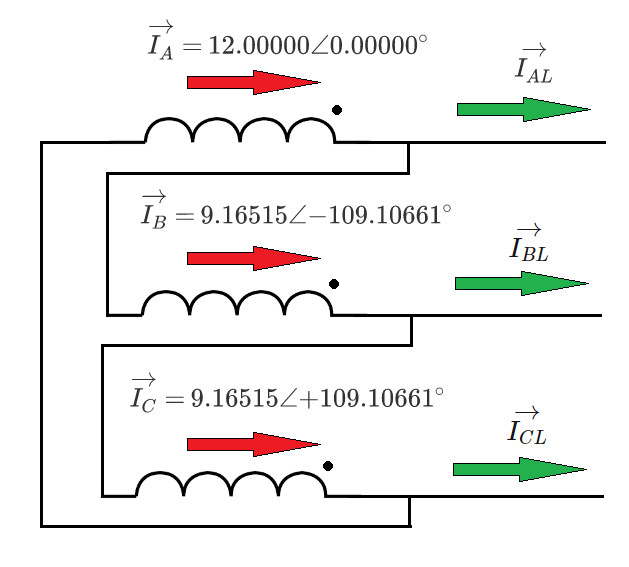Delta Winding - Common Mode Removal

A set of three-phase AC (alternating current) transformer windings is connected in a delta configuration, as shown above. Other windings are not shown. Winding currents ( I A , I B , I C ) and line currents ( I A L , I B L , I C L ) are also pictured.
The following relationship holds for these currents (to a close numerical approximation):
I A L = α ( I A − β ) I B L = α ( I B − β ) I C L = α ( I C − β )
To one decimal place, what is the magnitude (absolute value) of ( α + β ) ?
Notes:
-
α and β are complex numbers .
-
In general, A ∠ θ denotes a complex number with a magnitude of A and an angle θ with respect to the positive real axis
-
Angles are given in degrees
-
Vector multiplication here is NOT the dot product. For example: ( A + j B ) ( C + j D ) = A C − B D + j ( A D + B C ) .
-
Feel free to use a calculator to do the complex arithmetic.
The answer is 3.6.
This section requires Javascript.
You are seeing this because something didn't load right. We suggest you, (a) try
refreshing the page, (b) enabling javascript if it is disabled on your browser and,
finally, (c)
loading the
non-javascript version of this page
. We're sorry about the hassle.
0 solutions
No explanations have been posted yet. Check back later!